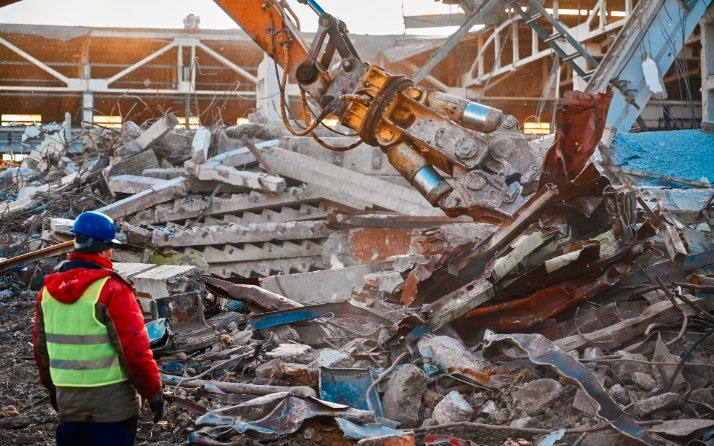Edinburgh, Scotland — A transformative shift in Europe’s construction sector is being spearheaded by Scotland, which has been selected as one of four cities to trial a new Circular Construction Hub (CCH) model aimed at revolutionising how materials are reused across the continent. With backing from the EU’s Horizon Europe programme, the initiative aims to attract over €80 million (roughly £67 million) in private investment across its pilot locations in Scotland, Munich, Copenhagen, and Lisbon.
A Marketplace for Reclaimed Materials
Led in Scotland by Zero Waste Scotland, the CCH model will function as a material reuse marketplace, matching salvageable materials from demolition projects with developers engaged in new construction. The goal: turn second-hand building materials into a financially viable and industry-standard alternative to newly extracted raw materials.
The initiative falls under the CirCoFin (Circular Construction Finance) umbrella—a €6 million project under Horizon Europe that targets a radical shift in construction norms. The project’s remit includes everything from feasibility studies and investment modelling to industry engagement and supply chain logistics.
“This is a chance for Scotland to lead by example,” said Iain Gulland, Chief Executive of Zero Waste Scotland. “We want reuse to be both convenient and aspirational for businesses while drawing significant sustainable investment into the country.”

Government Support and Circular Economy Goals
The pilot aligns with the Scottish Government’s Circular Economy and Waste Route Map to 2030, which prioritises the reduction of construction waste—currently making up as much as 50% of the country’s total waste output.
Acting Net Zero Secretary Gillian Martin welcomed the news, saying: “There are huge opportunities in making reuse and recycling the default. This hub will not only reduce waste but will also strengthen supply chains and drive down construction costs.”
Scotland’s material footprint currently stands at 21.7 tonnes per capita, a staggering 40% above the European average. According to Zero Waste Scotland’s Corporate Plan (2024–2030), the goal is to reduce raw material extraction by one-third within the next five years.
The Circularity Gap
The need for such a transformation is underlined by Scotland’s Circularity Gap Report, which shows that the country’s economy is only 1.3% circular. The report, developed with Circle Economy, argues that smarter resource use in planning and building could cut material use by 11.2% and reduce carbon emissions by 11.5%.
The Hub Model: How It Works
Each Circular Construction Hub will include:
-
Physical Material Bank: A storage and processing facility for reclaimed components.
-
Digital Marketplace: An online portal cataloguing available materials and facilitating exchanges between suppliers and buyers.
-
Support Services: Cleaning, repair, cataloguing, and logistics tailored to heavy, bulky materials like steel beams, wood panels, and bricks.
The hubs will be run by private operators, meaning financial viability is crucial. Services will need to be cost-effective, scalable, and easy for the construction industry to adopt—an industry traditionally resistant to change due to risk aversion and strict safety standards.
A key component of success will be standardisation. German standards organisation DIN is part of the CirCoFin consortium and will lead efforts to develop and validate usable standards for secondary materials.
Pan-European Impact
CirCoFin hopes the pilot hubs will act as templates for replication, with a long-term goal of enabling at least 30 additional cities across Europe to implement similar models.
The project’s €6 million grant is intended to unlock a much larger wave of private sector investment. The target—€80 million—illustrates how the EU aims to leverage modest public funding to crowd in substantial capital for green infrastructure.
Driving Forces Behind the Model
Several macro-level trends are converging to support the CCH model:
-
Soaring costs of virgin raw materials.
-
High landfill fees and regulatory restrictions on waste disposal.
-
Increased corporate focus on ESG (Environmental, Social, Governance) compliance.
-
EU taxonomy rules requiring greater transparency and sustainability in construction.
The CirCoFin project is also integrated into the Circular Cities and Regions Initiative (CCRI)—a broader EU framework that provides knowledge-sharing platforms, technical support, and connections to investors.
Commercial Promise in Scotland
For Scotland, success could be a game-changer:
-
Job creation in construction, repair, remanufacturing, and logistics.
-
Cost reductions for construction firms through resource efficiency.
-
Access to capital for sustainable ventures and material banks.
If Zero Waste Scotland’s hub proves viable, it could not only meet domestic policy goals but also turn the country into a model exporter of circular construction expertise.
In an industry responsible for up to 70% of global CO₂ emissions and over 30% of total waste, the potential for transformative impact is clear. And for Scotland, the move may not just be about sustainability—it may also be about global leadership.

















